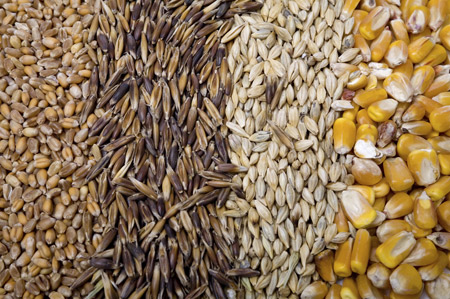2012 Ag Review: Input Costs, Grain Prices
Category: Grains
 (Corn and Soybean Digest) – Input Costs
(Corn and Soybean Digest) – Input Costs
Crop input costs in 2012 increased moderately, compared to 2011, with fairly significant increases in expenses for seed, fertilizer and fuel, and lower increases in chemical costs. For the second year in a row, many producers had very limited corn drying costs, due to the early maturity of the corn and the much warmer weather pattern this past fall, and crop insurance rates remained fairly steady. Land rental rates increased significantly in many areas in 2012, and are likely to have another increase for the 2013 growing season. Feed costs for livestock producers were significantly higher in 2012, compared to a year earlier, but should moderate later in 2013. Agriculture interest rates, both for operating loans and longer term loans, remain quite low, which is a trend that is likely to continue in 2013.
Grain Prices
Grain prices rose to record high prices this past summer, reaching harvest price levels near $8/bu. for corn and over $17/bu. for soybeans in southern Minnesota. By mid-October, local cash grain prices had moderated to near $7.25/bu. for corn and below $15/bu. for soybeans, and by late December have dropped to below $7/bu. for corn and below $14/bu. for soybeans. While these are still quite favorable price levels, they are considerably below the high price levels of late summer. Harvest grain prices for fall 2013 are currently just above $5.50/bu. for corn and $12/bu. for soybeans in south-central Minnesota, which will create much tighter profit margins for the coming year, as compared to 2012.
Many farm operators did not market a lot of their corn and soybeans at the top price levels, as they started marketing their grain last spring and early summer, before the major drought occurred. Forward pricing some of their anticipated grain production early in a given year is a solid risk-management approach that has been used by producers for several decades, and is usually a very good farm business strategy.
A lot of corn in the region was forward priced at $4.75-$5.50/bu. in May and June, and the soybeans at $12-13/bu., which seemed like good prices at the time. Once the drought set in, grain prices increased dramatically; however, producers needed to be cautious how much more grain they were forward contracting, in case they did not get the bushels. As a result, many farmers ended up missing the top of the 2012 grain markets. Fortunately for most corn and soybean producers in Minnesota the strong grain prices continued into harvest season and beyond, which along with better than expected production, resulted in a very profitable year for crop production in 2012.
This is the second of a two-part article highlighting what happened agriculturally in 2012.




